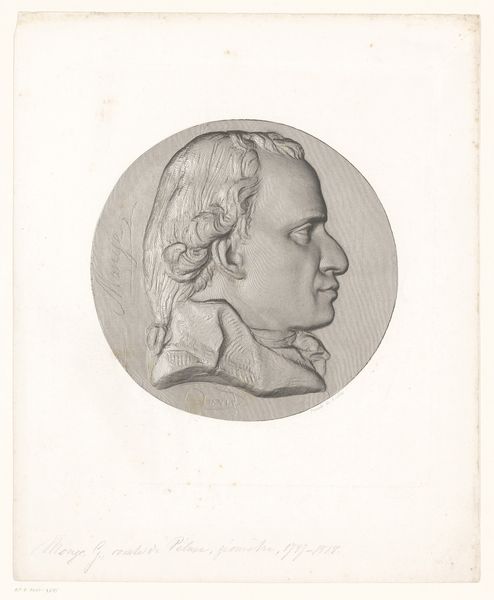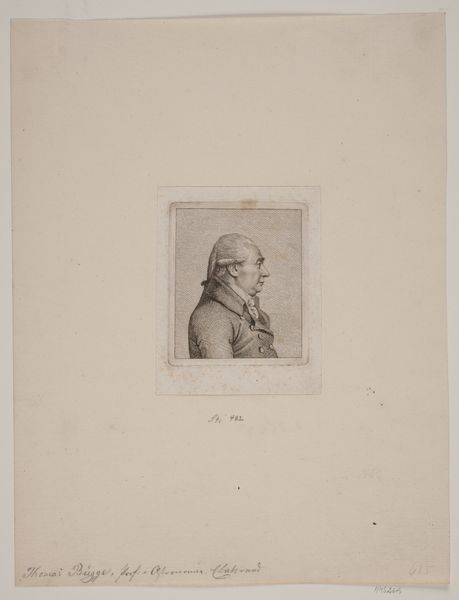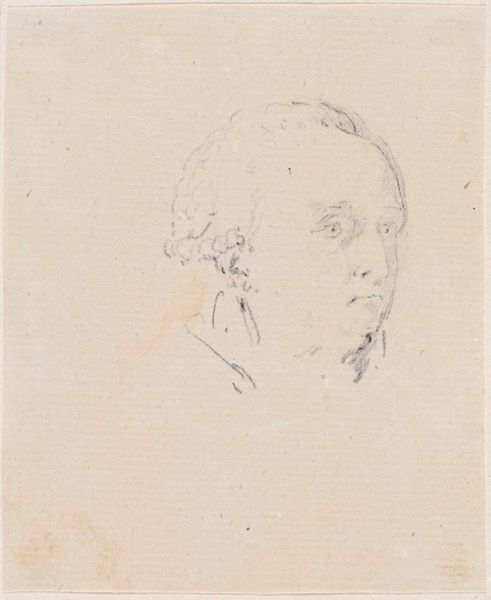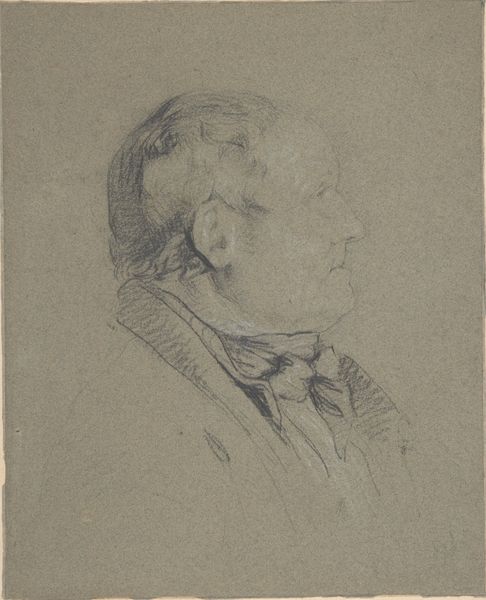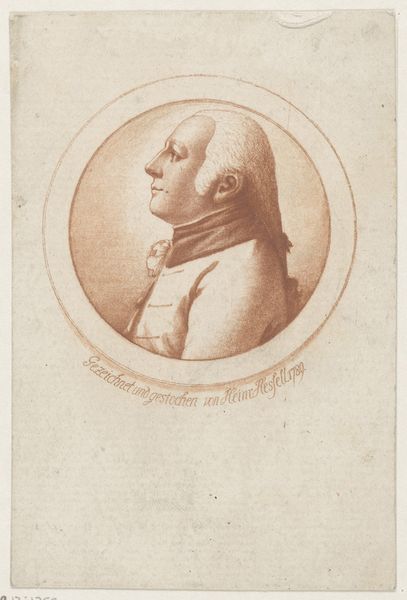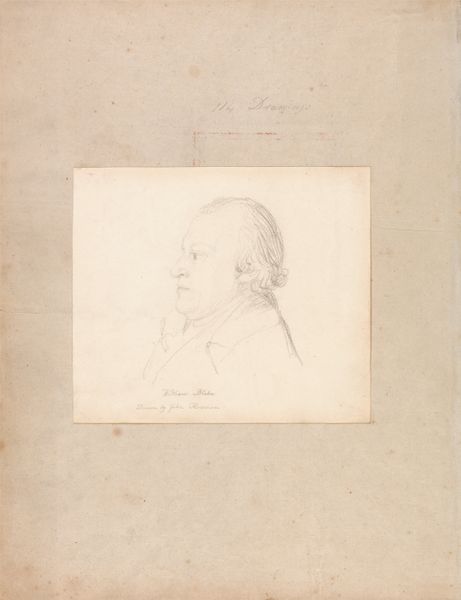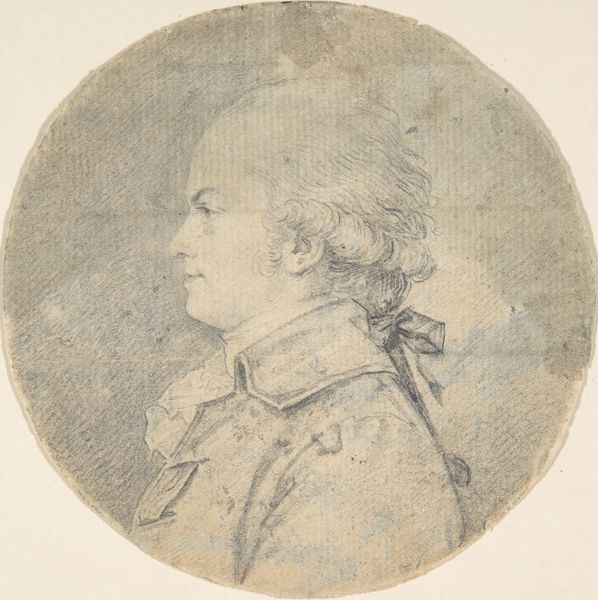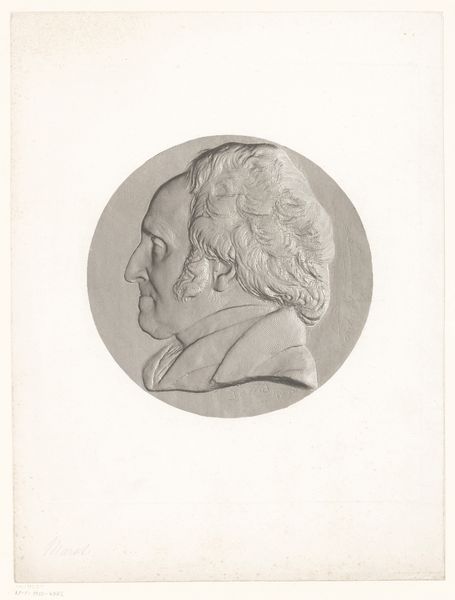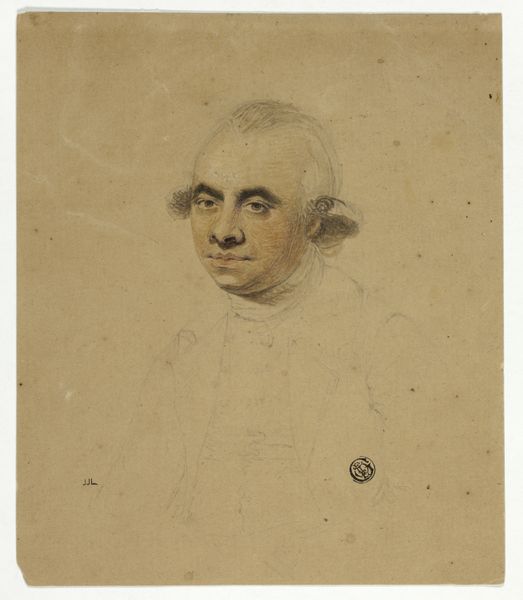
Mandsportræt, indskrevet i cirkel, profil mod venstre 1745 - 1802
0:00
0:00
Dimensions: 171 mm (height) x 144 mm (width) (bladmaal)
Editor: Here we have "Man's Portrait, Inscribed in Circle, Profile to the Left," a pencil drawing from around 1745-1802 by Jens Juel. It's striking how delicate the lines are, especially for a portrait; it gives a softness to the man's face. What are your first impressions of this work? Curator: Well, I'm immediately drawn to the sense of contained energy. The circular frame both restricts and elevates the subject, wouldn't you agree? It's as if the artist is capturing not just a likeness but also a fragment of a world, almost a celestial body revolving in its own orbit. Do you think the muted tones enhance this effect? Editor: Absolutely! The gray palette reinforces the idea of something historical and precious, a snapshot from a bygone era. And it contrasts interestingly with the sharp lines of his profile. Was this circular framing a common technique at the time? Curator: Indeed! It harkens back to the tradition of portrait medallions, a popular way to immortalize individuals. But Juel elevates it, doesn't he? With a light touch, creating a sense of airiness that transcends mere representation. Almost as if he is trying to hint that the man's importance stretches far beyond the aesthetic of wealth so often shown during that period. It makes me want to time travel and find out all about him! Editor: It definitely sparks curiosity about the subject. Looking closer, it seems like Juel intentionally left parts unfinished, particularly around the circle itself. Why do you think that is? Curator: I'd argue it invites the viewer to participate in the act of creation. The implied lines give us room to imagine, to fill in the gaps. It speaks volumes, in my view, about Romanticism where artists like Juel preferred suggestion and allusion over explicit statements. A little like whispering secrets instead of shouting announcements. Editor: That's fascinating! I never considered how the incomplete aspects could enhance the viewing experience like that. Curator: See? There's magic in what isn't there, sometimes! And who knows, perhaps leaving some parts incomplete gave a little breathing room to his subject! Editor: It is a subtle rebellion, I can see how it reveals so much about the historical period through intimate detail. Thank you for that insightful perspective.
Comments
No comments
Be the first to comment and join the conversation on the ultimate creative platform.


